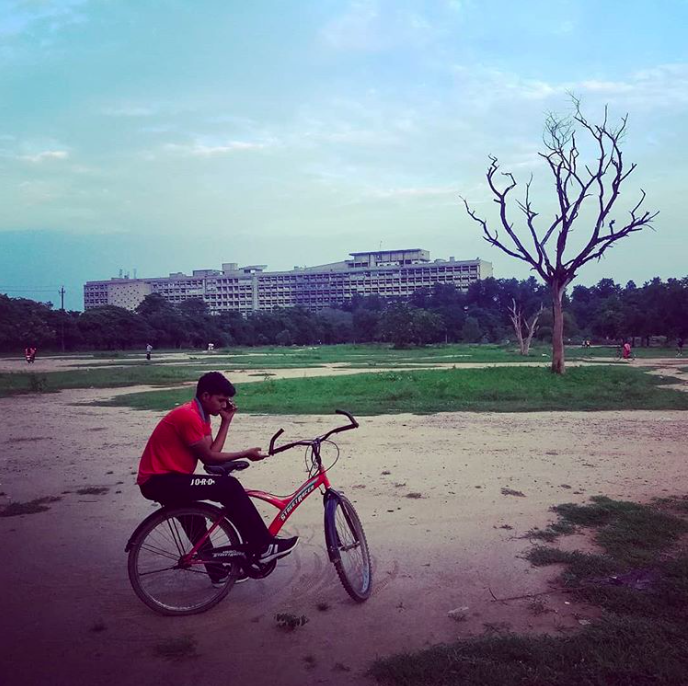Human Devils: Affects and Spectres of Alterity in Eerie Cities of Georgia
Tamta Khalvashi and Paul Manning
2021
In Modern Folk Devils: Contemporary Constructions of Evil, edited by M. D. Frederiksen and I. Harboe Knudsen, 63–79.
Helsinki: Helsinki University Press
Introduction
Ghosts and ghoulies were once prematurely pronounced dead with the arrival of electrical lights and modernity. Yet, in the wake of what Roger Luckhurst has called the ‘spectral turn’ (2002), inspired by Derrida’s Spectres of Marx (1994), they have made quite a comeback in theoretical circles, and in urban studies in particular. Unlike traditional ghosts, however, these ghosts are usually treated as metaphoric spirits, with more kinship to the Hegelian spirit, an invisible force (similar to capitalism) advancing world history, than the spirits of folklore, implying the animating force of nature.1 Their haunting thus is very abstract, acting very generally to destabilize all categories of dwelling, presence and totalized urban planning. In this way, the ghost, already a somewhat indeterminate kind of spirit, is reduced to an eerie figure of ‘spectral modernity’ (Luckhurst 2002, 528). Spectral modernity offers a period in which ‘time is out of joint’, incarnating the uncanny return of the repressed, where the !gure of the ghost is both present and absent. Ghosts can thus be encountered at every turn in the city as a way of capturing the relationship between particular a#ects of haunting and particular kinds of places. Hence, unlike the ‘folk devils’ that are marked by political power or media as speci!c social groups threatening societal values and interests (Cohen 2011 [1972]), here devils and ghosts, instead, appear in their traditional and folkloric forms in the city. They surface in times of changing societal and physical structures while creating anxieties and doubts about the present. As such, these ghosts and spirits are both concrete and yet metaphysical.
This chapter is about spectral hauntings in Georgian cities. We argue that some Georgian goblins, just like the cities they dwell in, are experienced as eerie not solely metaphorically but literally. There are fascinating ethnographies of devils emerging metaphorically or symbolically in various Georgian cities and semi-urban contexts, such as devils of the refugee camps (Dunn 2018), the persistence of criminal devils in Batumi (Frederiksen 2013), or new elites as devils (Manning 2009, 2014). Yet, none of these ethnographies deal with devils from folklore that become !gures of human alterity in the city, migrating from rural to urban environments to appear as real human beings. In doing so, we argue that human devils produce similar affects as Georgian cities, some of which appear empty, half-finished or broken (Khalvashi 2019). While ghosts are usually considered ex-people who have entered the ghostly estate, Georgian goblins were never originally people. “ey were originally goblins or devils, but in the process of urbanization and modernization terms for goblins became ‘slangy’ terms for kinds of strange people created by sudden urban changes (Manning 2014). The Georgian goblins, in this sense, are radically different from Western ghosts in that, as non-humans, they might at some point become humans. Western ghosts operate in the opposite manner: generally they are humans who attain a condition that is monstrously opposed to humanity. Georgian goblins hence are a fascinating point of departure. They demonstrate how Georgian cities are haunted by spectres of alterity that are felt by their residents to be eerie. As urban geographer Steve Pile puts it, It is easy enough, I think, to see how certain feelings – and their ghostly presences – might appear in cities. Of course, people feel things and if those people are in cities, then they are going to feel them there. And, just as surely, cities might make people feel things: all those strangers, all those dark alleyways, and all those stories of violence. But this hardly means that cities are ghostly – and it certainly doesn’t mean that we have a sixth sense in our encounters with places, does it? (Pile 2005, 243) At the core of spectral modernity then is the eerie sensations produced by specific urban spaces. “




